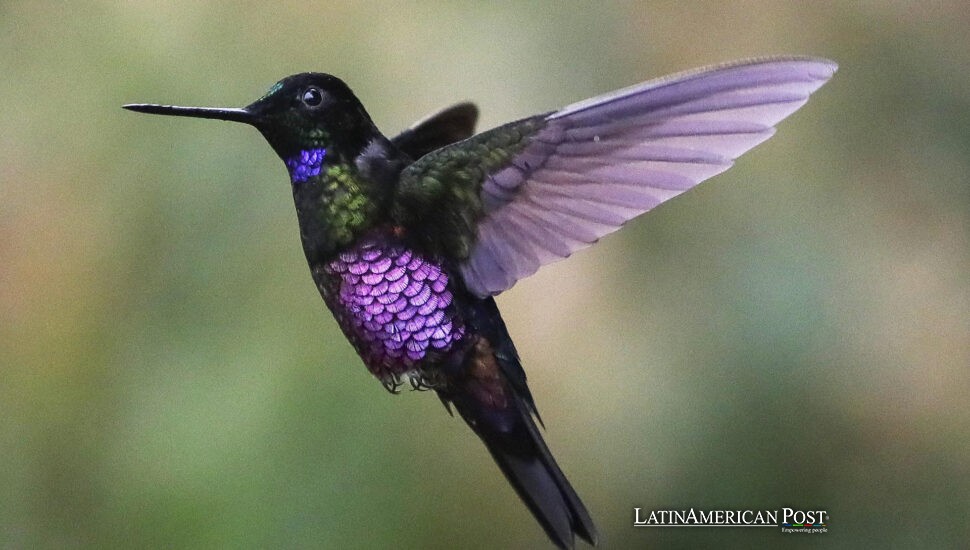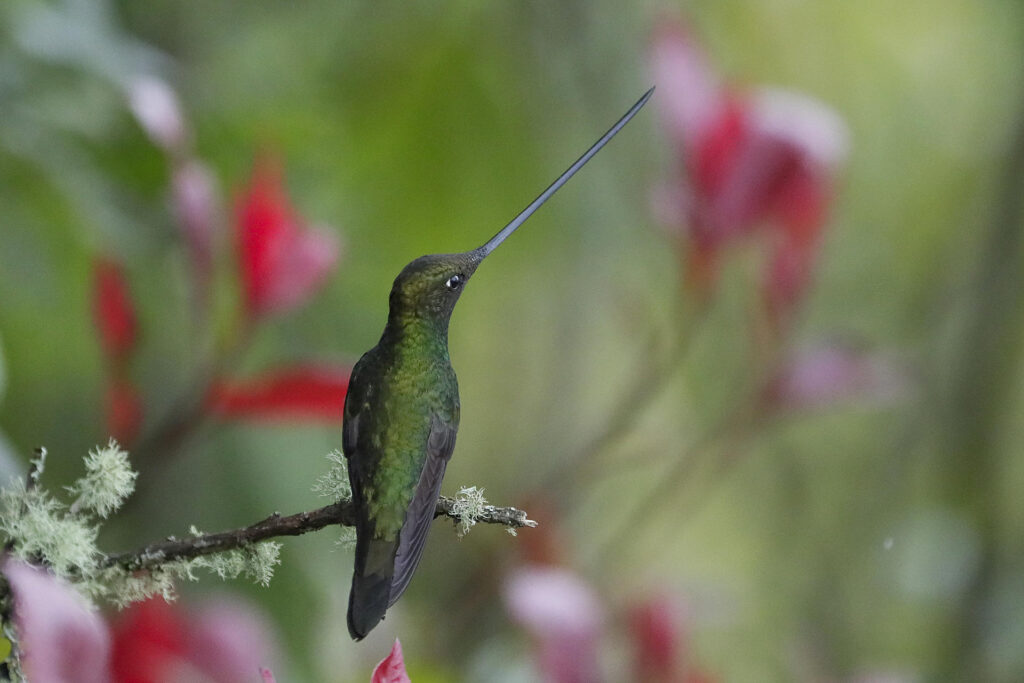Colombian Hummingbirds Dance as Misty Monserrate Unveils a Vibrant Haven

Before dawn breaks in Bogotá, mist shrouds the steep path to Monserrate, where a dazzling ballet of hummingbirds enchants hikers. This natural sanctuary—within a religious pilgrimage site—reveals Colombia’s uncanny ability to blend spirituality with stunning biodiversity.
Mist, Prayer, and a Flash of Color on Bogotá’s Sacred Peak
Long before sunrise, when the city’s traffic still murmurs in its sleep, a steady trickle of pilgrims gathers at the base of Monserrate. The gray steps twist upward—1,500—through the Andean cloud forest toward a white-walled sanctuary almost a kilometer above. Most climb for faith. A growing number pause for something smaller yet just as stirring: the hum of wings shimmering like dropped jewels in the half-light.
“Cloudy mornings are best,” guide Luis Eduardo Parra tells a weary group of hikers, his words rising into the fog. The sunlight bothers them. In mist like this, the hummingbirds show up right when your legs give out—almost as though they’re cheering you on for the last stretch.” His laugh drifts away with the vapor. Parra’s remarks shared with EFE set the tone for a trail where devotion intertwines with natural wonder.
Stone Steps and Beating Hearts
Colombia claims the world’s richest bird list, and Bogotá—eight million residents strong—still finds room for pockets of wilderness. Monserrate is one of them. Between the basilica’s bells and the buzz of souvenir stalls, native fuchsia, and verbena bushes attract 18 species of hummingbirds whose colors defy the mountain’s muted palette. Rufous tails flare; throats flash indigo; wings blur at 80 beats a second.
A new footpath, Sendero de Aves El Paramuno, has turned a 300-metre detour into a pilgrimage. Roughly 6,000 people wander it yearly, binoculars fogging, smiles absurdly wide. A British couple, clutching steaming cups of tinto, told EFE they had never stood so close to hummingbirds outside a documentary: “They act like we’re not even here.”
Look long enough, and territorial skirmishes unfold in miniature. Sword-billed hummingbirds—whose beaks seem to belong to birds twice their size—duel with fiery-throated rivals for a tangle of blossoms. Each victory buys a few seconds’ gulp of nectar; each defeat sends the loser, indignant, to the next bloom.
Lives Lived at Full Throttle
Parra keeps a running commentary. “Daytime heart rate? About 1,200 beats a minute. Body temperature? Forty degrees. They’re always one sip away from starvation.” He speaks to EFE yet projects for everyone’s benefit. Night brings a miracle of self-preservation: torpor. The birds bank their internal fires, pulse dropping below 100, feathers fluffed against the chill. It’s a calculated gamble—burn less fuel, risk predators—survival on a razor’s edge, hidden above the city lights.
Visitors gasp when two males collide mid-air with the clack of tiny bills, spiraling like autumn leaves before snapping apart. “Nature’s never gentle,” a hiker murmurs, wiping sweat. “But it’s perfect theatre.”

Sugar, Flowers, And A Pact with the Mountain
Scarlet feeders dot the path, refilled each dawn with fresh sugar water. Let it ferment in the sun, and you could harm the very creatures you came to admire, Parra warns. Native blossoms fill in the rest—pink chuquiraguas, deep-throated salvias, spires of diente de león that seem lit from within when a bird plunges its head inside.
The maintenance behind this spectacle is invisible to most. Conservationists from Audubon Colombia partner with local authorities to install signage, clear invasive plants, and coax city dwellers into seeing the hill as more than a weekend selfie. “Each hummingbird is an ecological ambassador,” says Camilo Cardozo, Audubon’s director, in an interview with EFE. “Let people fall in love with them, and they’ll fight to keep the forest alive.”
Also Read: Argentina’s Frozen Mystery: The Unresolved Fate of Dr. Janet Johnson
By late morning, the fog thins, and the sun pours through like a spotlight. Hummingbirds retreat into deeper foliage, their show briefly over. Tourists queue for the funicular ride down or drift into the church for whispered prayers. Yet most carry away the same souvenir: a memory that flits back whenever city worries crowd in—a blur of emerald, a heartbeat too quick to count, proof that life can burn bright even in the thin air where devotion meets the sky.
